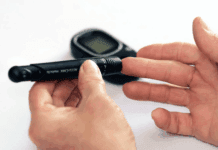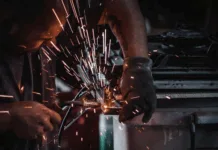 Every industry is experiencing massive changes and innovation, and technological advances are changing all areas of life and businesses on many levels.
Every industry is experiencing massive changes and innovation, and technological advances are changing all areas of life and businesses on many levels.
Thanks to technological innovations, the welding sector is experiencing a profound transformation. While it may seem unlikely that technology could revolutionize such a hands-on aspect of construction, the introduction of advanced tools and technology is significantly enhancing welding processes and standards.
Intrigued? Let’s take a closer look.
Weld Automation
Weld automation involves using specialized equipment and software designed to automate welding tasks. Robotic arms, welding positioners, and other tools can be applied in the welding process to help automate standards and results and save companies time and costs.
Understanding your processes and where automated welding systems can benefit your company will help you identify the right automation for your needs and maximum benefits.
AR
Augmented reality (AR) for welding holds immense potential for revolutionizing training and operations. The ability to simulate environments for safe training of future welders is a game-changer, offering hope for new trainees and existing welders to learn and improve. This not only reduces the need for consumable materials but also enhances safety, making ongoing training and skills upgrades more affordable and effective.
But in the real world, outside of training capabilities, AR also has its uses. AR can provide real-time guidance to help improve precision and deliver feedback to maintain quality and consistency easily. It can also be instrumental in reducing accident injuries and mistakes that can endanger people during construction or after due to incorrect techniques or poor-quality results.
PPE
Personal protection equipment isn’t immune to technological advances; it’s an area that greatly benefits from them, especially in the welding sector.
Advanced helmets have auto-dimming features and control to adjust lens shade, delivering continuous eye protection for wearers. Some helmets can include LED lights to help acclimate to different environments, while others have app connectivity to deliver real-time monitoring and diagnostics for improved results and problem-solving.
Gloves are another form of PPE that has been elevated via technology. Glove designs with pre-curved fingers can improve precision and reduce fatigue while delivering greater heat resistance and durability. New materials allow clothing to be disengaged with greater heat and flame resistance for added safety.
3D Printing
3D printing helps to open up the possibility for welding companies to deliver custom fabrication and rapid prototyping. For those in the aerospace or automotive industries specifically, this enables increased production and improved features and deployment of parts that rely on precise details and intricate details for parts to help with the reliability and safety of the products produced in these sectors. Pairing this technology with traditional welding techniques and expertise can blend the best of human skills and know-how and technology to deliver more significant results and innovation.
Quality Control and Maintenance
By utilizing IoT and data analytics in welding, you can experience greater insights and results than using traditional data to help fuel decisions and deliver perfect performance.
Monitoring output, identifying issues and bottlenecks, ensuring consistent quality control, and implementing preventative maintenance technology can infiltrate many areas of what you do to help you uncover a greater data set that helps you improve operations across the board and work towards standardization for your output as well as surrpoitng employees as required as data allow you to uncover issues with personnel and techniques that don’t meet required standards or are impacting your output.
Drone Technology
Drone technology, i.e., drones equipped with sensors, cameras, and even robotic arms, can be effective for welding tasks in hazardous locations or hard-to-reach areas.
Welding in areas like bridges where access isn’t easy or unsafe for humans to work in, or checking welding on some rigs, for example, or in dangerous areas, has long posed problems for companies that require performing upkeep, repairs, or preventative maintenance. Drone technology has advanced to allow some tasks to be completed via technology. Whether you simply need eyes on specific areas or you need research tools to complete repairs or collect data, it allows companies to save a significant amount of money and improve the health and safety of employees by removing the need for them to physically access areas that are not safe.
The welding industry isn’t immune to technological advances. In fact, it’s somewhere that can be enhanced by the right technology, offering improved results, standards, and health and safety for personnel working in this area. From robotic arms to done technology, technological PPE, and automation, there are many options for welding companies to help them embrace technology and do what they do, but better.



